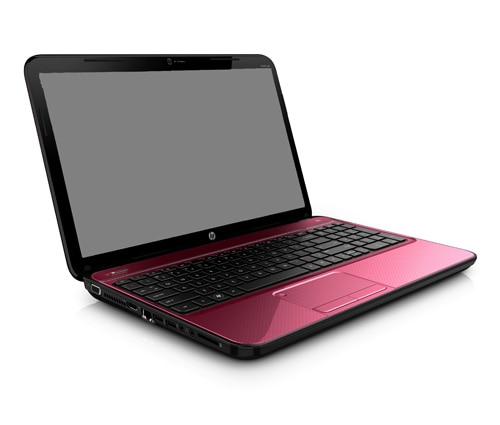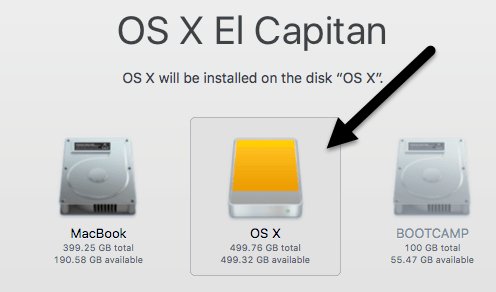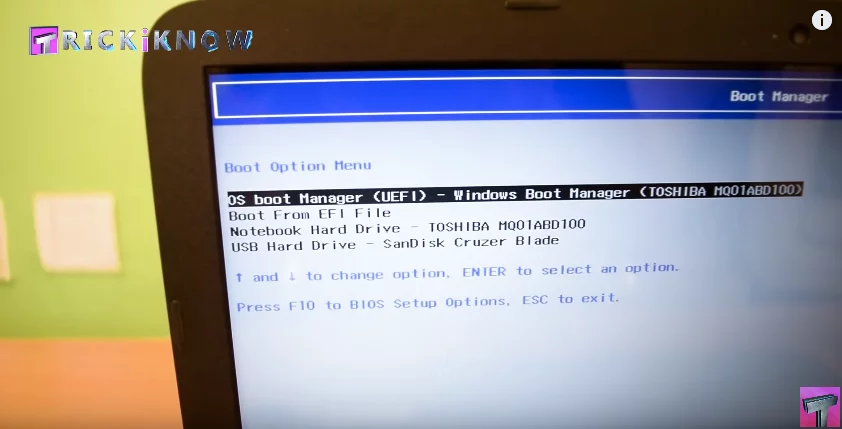Mac OS X EL Capitan On A 750GB 7200 RPM Hard Drive 2.5' MacBook Pro & Mac Mini 5 out of 5 stars (25) 25 product ratings - Mac OS X EL Capitan On A 750GB 7200 RPM Hard Drive 2.5' MacBook Pro & Mac Mini. One drawback to booting Windows 10 from a USB device is that the operating system will be slower than it would be if it ran off your regular hard drive. With that said, it’s still a good option if you want a new OS. Mac hard drives should be formatted as 'Mac OS Extended' (aka HFS+), but Macs can also read/write to drives formatted as FAT32. Windows hard drives are usually formatted as NTFS or FAT32. A Windows system cannot read or write to Mac formatted hard drives without software like MacDrive.
Summary: This blog helps you know more about hard drive journaling on Mac.
Topics covered in the blog are as follows:
1.Importance of Journaling
2.How to Enable Journaling
3.How to Disable Journaling
Would you like to try our data recovery software on your Mac? The demo is absolutely free.
Journaling is a Mac OS X feature that is extremely helpful in protecting the system against the problems that arises due to power failures, hardware failures and directory corruptions. When the journaling is enabled on Mac, it keeps record entries of the changes to the files present on the disk. These entries are maintained in a special type of data structure called “Journal”. All of this happens automatically on OS X. In an event of an abrupt shutdown of the system due to power outage or another failure, these journal entries make it possible to restore the system to the last known consistent state of working. However, the data that was in the buffer while the system failed, may be lost but the system is reinstated to the working state. Additionally, restarting the system gets faster due to journaling. If the drive is formatted in Mac OS X Extended (Journaled), then by default, journaling is active on the drive. Manually activating and deactivating the journaling feature is discussed later in this blog.
Importance of journaling on a Mac system
With every write and read operations, file system directories are updated with the file locations and other data. Before the operating system commits to any action, it makes an entry in the “Journal” and then executes the transaction. Additionally, it also marks the action as completed in the journal once the task has been executed. This way a record is maintained of the current transactions, that happen. However, this process results in write overheads; it is worth it. In an event of a power failure or any other disaster which prevents this update to the file system directories, the operating system will take an unexpected amount of time to start again since the system will have to perform a consistency check that requires it to go through the entire file system block by block. More the data present on the system, more time it takes to reinstate the machine to its working state. With journaling feature enabled, a lot of time spent on consistency check can be saved, as with journaling is done already, the need for consistency check is eliminated. All that operating system has to do is to refer to the “Journal” and get the records of all recent transactions that happened prior to the system failure. This way the system is reinstated to the working state faster. In addition, it just takes a few seconds for the operating system to resume the normal operations.
Additionally, the journaling feature on Mac OS extended filesystem being implemented in an incremental way; it is backward compatible with Mac OS extended filesystem machines not having this feature. This means that you can read, write or access the Journaled Mac OS extended volumes on a machine with Mac OS extended file system that does not have a journaling feature.
Also ReadList of Top 5 Mac Hard Disk Drive Repair Software
Turning ON/OFF the journaling feature on a Mac
Enable journaling
Turning on the journaling feature is quite simple and can be done from Disk Utility application on a Mac. Here’s how to do it:
- Go to Applications > Disk Utility
- Select the volume or drive on which journaling is to be enabled. If the volume is formatted with Mac OS Extended (Journaled), journaling is already active.
- Select the File menu option
- From the dropdown list, select Enable journaling. This enables the journaling on the selected volume
Alternatively, you can also enable it using the Terminal application. Here’s how to do it:
- Go to Terminal application
- Enter the command sudo diskutil enableJournal volume/VOLUME_NAME and press return
Disable Journaling
Journaling on the Mac hard drive is enabled by default. It does incur write overheads as the file system makes an entry in the journal before committing the transaction and later has to mark it as complete in the journal. These write overheads are worth since journaling provides protection against system failures. However, in some cases, journaling may have to be turned off due to reasons such as a media device not supporting HFS+ Journaled or some programming files that works best without journaling to gain more operating speed. In such cases, here’s how to turn off journaling:

- Go to Terminal application
- Enter the command sudo diskutil disableJournal volumes/VOLUME_NAME and press return
Some older versions of OS X prior to OS X Mountain Lion allows disabling journaling from disk utility itself. Just select the volume and disable journaling from the File menu.
Yo just got a new external hard drive and want to use it on your Mac. However, the Mac OS does not allow you to write data to the drive. You may wonder how to reformat an external hard drive on Mac. Follow the tutorial below, you'll get everything covered.
Bonus: How to Recover Data from Formatted External Hard Drive on Mac
Reformatting an external hard drive for use with Mac OSX is not as difficult as it might seem. In a few simple steps you are ready to go and can save your back-up files to the external drive, keeping your information safe and giving you peace of mind. Keep in mind that a MAC can generally read other file formats, but for the best performance and to create a bootable disk, formatting exclusively for MAC is required.
Part 1: Which File Format You Should Choose?

Before you begin formatting the drive, there are a few things to do. The most important, you should decide which format to use.
There are a few file formats you can use, but it depends on the purpose you want to use the drive for. Which one is right for your circumstance? We'll describe them here, you'll know your choice after reading the details.
APFS: This is the default file system in Macs with High Sierra. It is efficient and reliable. However, it won't be readable and usable on machines that are not running Mac High Sierra, and Windows or Linux PCs. What's more, it is compatible with SSD and flash storage devices only.
Mac OS Extended (Journaled/HFS+): If you didn't update your Mac OS to High Sierra, the default file system on your Mac shoule be Mac OS Extended. Mac OS Extended (encrypted) would be an ideal option if you probably carry your laptop or external drive here and there. You can encrypt it so that no one can access the contents on your drive.
MS-DOS FAT (aka FAT32): In addition to Mac, it can also be written and read by Linux and Windows. It enables you to regularly share files with your friends who own a PC. Nevertheless, this older file system is limited to no more than 4GB and there might be security issue and disk errors.
ExFAT: It is similar to ExFAT which can be read by both Windows and Mac, but it can store more than 4GB files.
NTFS: As the default file system in Windows, it can only read by Mac OS, writing to it is not available. Luckily, there are third-party tools to help you do so.
Part 2: Format External Hard Drive for Mac with Disk Utility

Formatting an external hard drive would erase everything on it. Hence, you must backup your important files before reformatting the drive if you want to save them. The easiest way is to drag it from one drive to another.

All is set, then you can go ahead to format the drive on your Mac. Disk utility - the MacOS utility application can help you with this. Just follow these steps below:
Step 1. Connect the external drive or the USB drive to the MAC.
Step 2. Start the Disk Utility, located under Applications > Utilities.
Step 3. Find the name of the drive in the left side of the Utilities window and select it. And click Erase button.
Step 4. Follow on-screen prompts to choose Mac OS Extended (Journaled) file system and allow the disk to format.
Bonus: How to Recover Data from Formatted External Hard Drive on Mac
In case you forgot to backup files before formatting the external drive. Here comes the cure - iMyFone AnyRecover - a one-stop solution to recover deleted, lost or formatted files from Mac.
Follow these simple steps using AnyRecover to get your files back!
Get Ready!
First, download and install AnyRecover, following on-screen prompts to accomplish the task.
AnyRecover 20% off Coupon Code: ANY-ART-D20
Don't miss the opportunity to get AnyRecover license at the lowest price on the market. Don't know how to apply it, check the instructions here:
Get Set!
1. After loading AnyRecover, plug your external hard drive into your Mac directly or via USB.
2. Next select the drive under 'External Removable Devices' tab, click 'Start' to begin scanning lost files on the drive.
Go!
Hard Drive With Mac Os In Hp Laptop Lenovo
1. AnyRecover takes a moment to scan your drive. Once done, it will list out all scanning results by file type.
2. Double click a single file to preview it before recovery.
3. Select the files and press Recover to get them back.
What If?
Hp Laptop Hard Drive Prices
What if my files were not found? Fear not. We can take this a step further. Enable 'Deep Scan' to try one more time, follow the steps above just as before to locate and recover your files.
It is plain to see that AnyRecover for Mac is a tool worthy of top shelf treatment in your arsenal of items that are used to defend, recover and keep your system up and running. Don't get caught without the file you need for that meeting or stumbling looking for baby photos that were stored on disk and suddenly 'hid' from your view. Allow AnyRecover to find and recover your lost files. AnyRecover is easy to use but provides sophisticated results that mean you know what you're doing!
